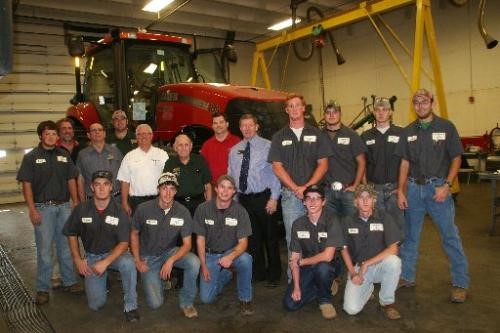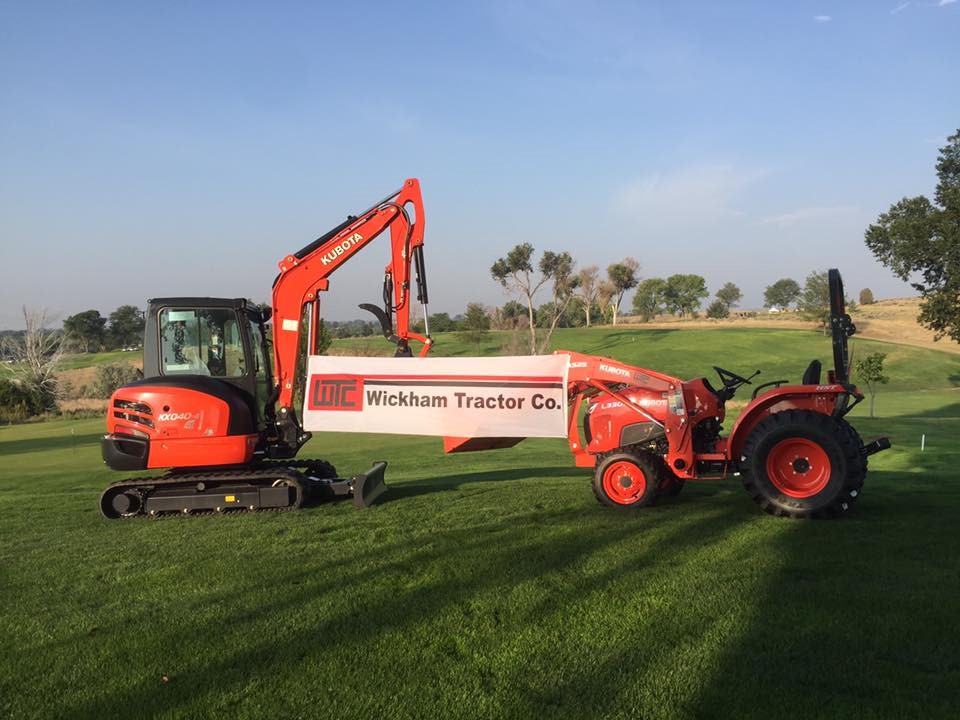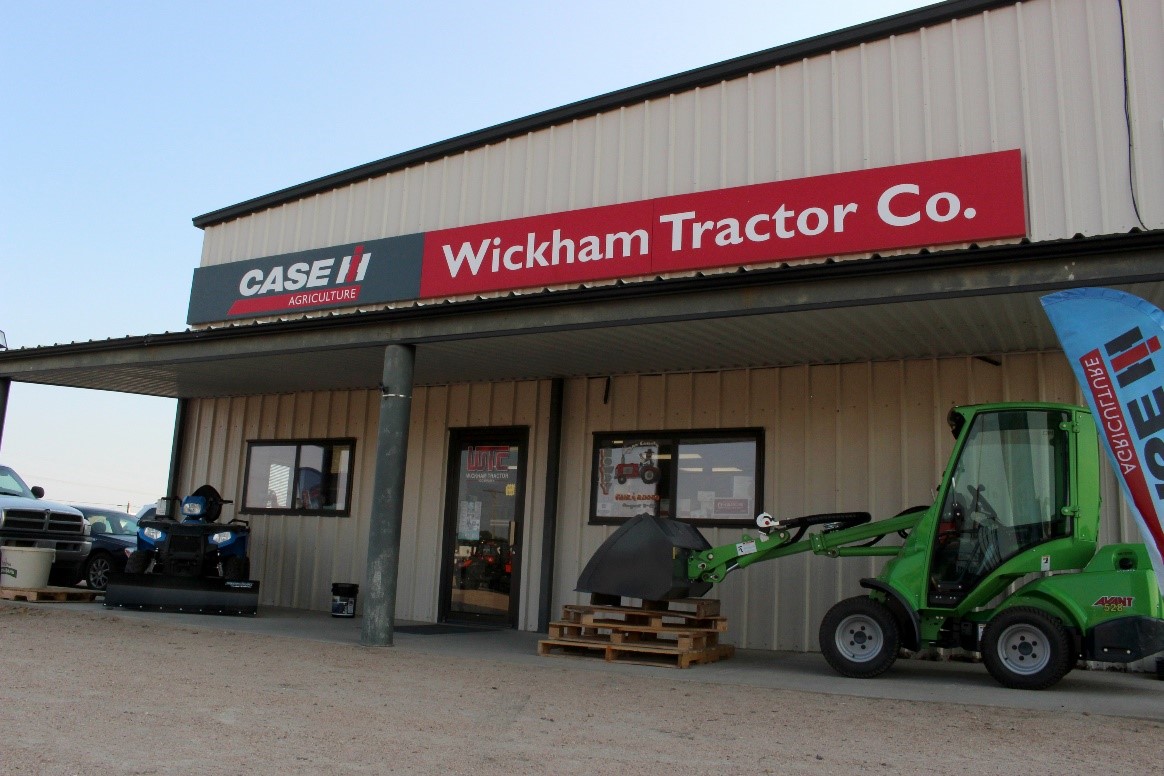More locations mean more complexity, right? Wrong. While scaling can be complicated, especially when it is done through acquisition – approaching it in the right manner can make the process go smoothly. Wickham Tractor Company in Eastern Plains, Colorado, grew from two stores to a five-store complex in one year after buying an existing dealer. Through standardization, effective training and extensive use of management reports, they have scaled effectively.
Founded in 1960, Wickham Tractor is a fourth-generation family business owned by brothers Jason and Brad Wickham. They are a forward-thinking, values-driven company, serving a wide-range of people – from big agricultural producers to city-based lifestyle consumers. Based in the beautiful Rocky Mountain region, the brands that they carry include Case, Kubota, Polaris and Cam-Am.
Ashlee Reed, the Corporate Service Coordinator at Wickham Tractor Company, makes sure that all five of the service departments are on the same page, and she is also responsible for IT training. We sat with her to learn how Wickham Tractor Company scaled its way to success.
What would you say sets your dealership apart from others?
 Ashlee: “We truly are a family-owned and operated business. Our owner group is very involved, and they don’t mind getting their hands dirty. They are smack-dab in the middle of business and they are very personable. Having that working relationship with them has been helpful and it makes a big difference to employees and customers alike. It’s the opposite of working for a corporate entity with people at the top who don’t actually know what’s going on day-to-day.”
Ashlee: “We truly are a family-owned and operated business. Our owner group is very involved, and they don’t mind getting their hands dirty. They are smack-dab in the middle of business and they are very personable. Having that working relationship with them has been helpful and it makes a big difference to employees and customers alike. It’s the opposite of working for a corporate entity with people at the top who don’t actually know what’s going on day-to-day.”
What would you say is the toughest part of your job?
Ashlee: “The volume of IT training is definitely the toughest part of my job. This is not because DIS is a complex system, but because of the amount of people that I have to train. Last year alone, I’ve trained about 10 people in just five stores – that’s a lot to go through.”
How do you manage the volume of people that you train?
 Ashlee: “I have a steps-and-procedures guide on the content of my training where I keep track of what employees need to know. I give everyone an overview of the basics of DIS and what it’s used for. I am constantly editing my own training Microsoft© PowerPoint and evolving it over time. I take snippets of screenshots while we’re using DIS and send those out on a regular basis.
Ashlee: “I have a steps-and-procedures guide on the content of my training where I keep track of what employees need to know. I give everyone an overview of the basics of DIS and what it’s used for. I am constantly editing my own training Microsoft© PowerPoint and evolving it over time. I take snippets of screenshots while we’re using DIS and send those out on a regular basis.
“We utilize Management 360, and we almost ‘live’ in that for a few days during training. We look at all facets, including Work in Progress (WIP), Open Documents and other elements critical to our business. When I have a store fully staffed, I travel to each location at least once a week, if not more.”
When did you implement DIS?
Ashlee: “We have been a DIS dealer for longer than I’ve been alive, so it has been quite a while. When we bought out our three new locations, they were on RIMSS. We had presentations from DIS, RIMSS and CDK. It was up to the management team and the two owners to make the ultimate decision on what they wanted. We chose DIS since they had all the resources that we needed, and it was the most economical choice.”
What would you say is the benefit of using DIS?
 Ashlee: “The biggest strength of DIS, in my opinion, is how easy it is to use. I don’t feel that it’s a very complicated system; it’s fairly simple and it’s straightforward to learn. Once you know the basics of how the system works, you just apply that knowledge to any task or report.”
Ashlee: “The biggest strength of DIS, in my opinion, is how easy it is to use. I don’t feel that it’s a very complicated system; it’s fairly simple and it’s straightforward to learn. Once you know the basics of how the system works, you just apply that knowledge to any task or report.”
What feature helps you the most?
Ashlee: “In my day-to-day, the feature that helps me the most is definitely Management 360. I pretty much ‘live’ in it. It helps me keep tabs on all five stores, where they are progressing in terms of their monthly sales and open documents, for example.
“Warranties are something that we keep a pretty close eye on. We can check and see activity within Management 360, or within our WIPs. Once it gets to ‘no labor’ within 14 days, we focus in on that. It’s nice that I can have access to all five locations in one spot very easily.
“There are also some interesting things to come. I am excited to have the Service Scheduling and Service Logistics tools coming out – those will be game-changers.”
What would you say is the overall impact of DIS on your dealership?
 Ashlee: “We wouldn’t be able to function without it. We pretty much ‘live’ 100% in DIS. Having Customer 360 at our fingertips and getting a snapshot of what kind of equipment a customer owns when they walk in the door is invaluable.
Ashlee: “We wouldn’t be able to function without it. We pretty much ‘live’ 100% in DIS. Having Customer 360 at our fingertips and getting a snapshot of what kind of equipment a customer owns when they walk in the door is invaluable.
“I’m excited about bringing back the ‘picture’ function as well. Getting pictures in the system means that we can start to recognize our customers by name. When you view somebody’s picture anytime they call, you get to know what they look like. Then you can recognize them when they come into the showroom.”
What recommendations would you give to somebody looking to do your job?
Ashlee: “The advice that I would give to somebody trying to do my job is to ask the question ‘why.’ Learn why things are connected and which functions affect what outcomes, for example. When you change certain coding, what does that affect?
“It is a good idea to understand and explain the reasons behind the data that you collect as well. Otherwise, your managers will know how to input the data, but they may not understand why and what that does on the reporting side of things. Answering ‘why’ to those kinds of questions is key while training.”












